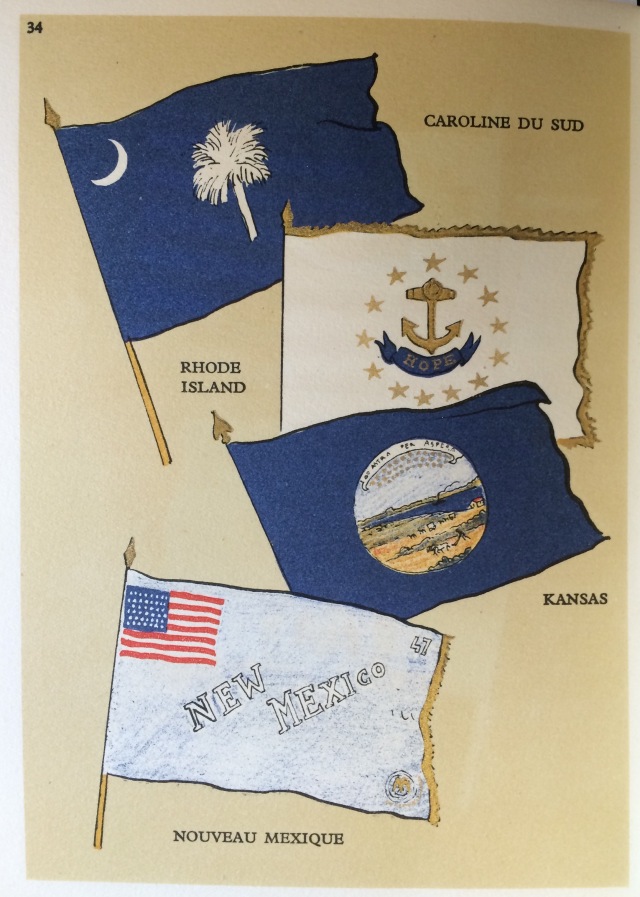We’ve previously featured a variety of illustrations from the Liberation Collection; this post will focus on just one book from the collection which is striking, both due to its subject matter and its highly illustrated nature.
Les drapeaux des États-Unis = The american flags (Old Glory) / Alfred Rigny ; dessins de Pierre Noury (Liberation.c.362)
A relatively small book, this contains a ‘Petit histoire du drapeau américain et des drapeaux qui figuèrent dans l’histoire des Etats-Unis d’Amérique (Old Glory)’, which is followed by 40 coloured plates of illustrations of the flags of the United States, and various related offices and organisations (the flags of the president and of various branches of the American military are included, for instance).

Interesting both as a brief testament to why it was published, and the exceedingly ornate fashion in which the book is illustrated, the 4-page introductory history of the flag (printed in both French and English) justifies the publication:
Maintenant qu’aux fenêtres des villes et des plus humbles hameaux de France, la bannière étoilée flotte en l’honneur des vaillantes troupes des Etats-Unis et en témoignage de profonde reconnaissance, il est de circonstance d’éditer en ce moment une courte histoire de l’origine et de l’évolution du drapeau américain : drapeau qui proclame les nobles intentions d’une puissante nation, et qui porte dans ses plis un message d’espérance et de liberté pour tous les hommes
The author then provides a brief potted history of the (then) 48 United States, and concludes with the final four lines of the American national anthem:
Nous devons conquérir quand notre cause est juste
Et que ceci soit notre devise « En dieu est notre foi ».
Et la bannière étoilée en triomphe flottera
Sur le pays des hommes libres été sur le foyer des braves.
I grew up in America, I went to school there and I’ve sung the national anthem at baseball games… or at least, I thought I had. I had to look up those lines, because I didn’t recognise the first two lines that Rigny quotes. However, it’s obvious why Rigny chose to highlight this relatively obscure portion of the anthem (it’s quite a long anthem, as it turns out!), at a time when France was emerging from the German occupation—that final stanza of the Star-Spangled Banner must have spoken directly to him. And perhaps this explains why the flags were coloured with such care. Not just were they printed in colour, but also outlined in gold paint that in our copy has held up remarkably well in the 70 years since the book was printed.

Another lavishly illustrated book in the Liberation Collection is The Paris I saw by Jacques Kim (Liberation.b.75). Addressed to American soldiers, this was presumably intended as a souvenir book to be taken back to the US. These books together indicate that publishers did not just appreciate the existence of Americans in France, but also saw significant commercial value in selling to them, as well.
Josh Hutchinson

